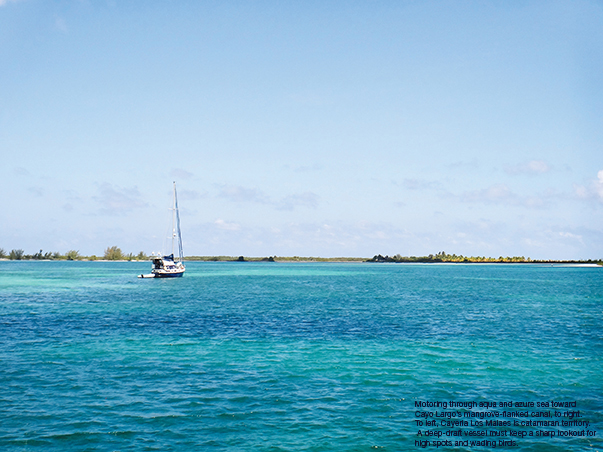The Cuba show (published September 2015)
It took nearly two years to obtain permission to travel to Cuba as a journalist. My OFAC license prohibits me from taking part in tourist activities or promoting tourism. I believe I have honored that obligation in the stories I chose to tell, and hope they will be of value to those who eventually cruise Cuba.
The guidebooks noted only one “don’t miss” destination off Cuba’s south coast: Cayo Largo, with its sugar-sand beaches, perfect snorkeling and inexpensive, all-inclusive hotels.

Cuban regulations also said, “don’t miss.” We were required to check in at the gateway port, Cayo Largo, before we could explore the Los Canarreos archipelago. Only a handful of boats had ranged this part of the Caribbean —foreign cruisers, fishing boats, and a steady drizzle of Venezuelan oil tankers—until 2013, when a Canadian company started weekly cruises. Soon there was a 78-foot catamaran, a barquentine and a four-masted clipper. Now, cruises brought 1500 visitors every week.
If we could have sailed straight from Cienfuegos, we would have enjoyed a broad reach ahead of easterly trade winds. Unfortunately, the rhumb line to Cayo Largo ran straight through a 600 square-mile prohibited zone surrounding the Zapata Swamp. Most of Zapata’s visitors commuted by air; 300 species of migratory birds wintered in the hemisphere’s most important wetlands. When Cuba set out to protect its environmental interests, it meant business. Zapata and Cayo Largo attracted millions of tourist CUCs.
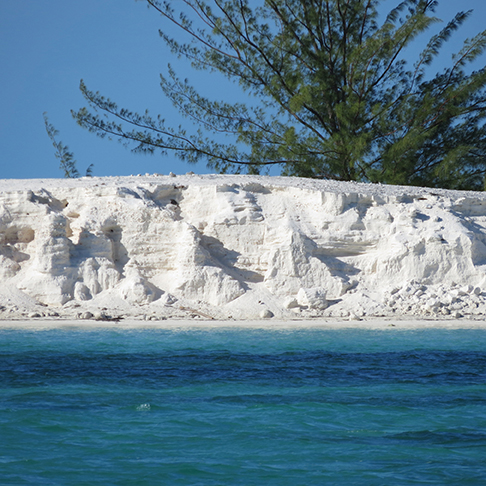
The prohibited zone forced us south on a close reach as far as Guano del Este, a sloshy anchorage that would allow us to reach our destination in good light. Next morning, we turned west for a pleasant offshore run until we spotted the beaches and hotels of Cayo Largo. Sometime in the 20 years since my charts were published a new channel had been dredged alongside Playa Sirena, but with no certain knowledge of its depth, and in a cruising ground dominated by catamarans, I decided to use the old channel.
We continued in 2,000 feet until we reached Los Ballenatos, where a red buoy and a couple of bobbing dive boats distinguished the reef. After our turn north, the depth meter shot to 40 feet; minutes later we were in 10 feet of startlingly beautiful azure and aqua water. We wove between nuns and cans differed only by their colors and top shapes. Where the new channel converged with the old, the buoys overlapped, creating a confusion of green and red to both starboard and port. Keeping green buoys to port, we made our final turn at a dazzling sugar-crystal beach where wading birds ignored us from shallows a boat-width away.
INTERNATIONAL CHECK-IN
Cayo Largo Marina could accommodate a few dozen boats stern—and side-to on finger piers at its three docks. The two piers for dive and tour boats were monitored 24/7 by men wearing sunglasses. The third dock, used by foreign-flagged and charter boats, featured a self-service quarantine chain and the inevitable guard. Cubans are not allowed on foreign boats, even if you invited them. They needed the port captain’s permission to board or even pass the customs quarantine line. Alerted to our arrival, the quarantine dock bustled with male and female officials from the usual agencies. They always had permission.
Piri, the longtime dockmaster, gave us the rundown on procedures. He introduced us to the doctor, who certified us disease-free, and the port captain, who collected papers. Then, certain that we didn’t need a translator, he excused himself. It was lunchtime. Meal hours at the dormitory dining hall were limited; the day before, he had checked in so many boats that he hadn’t eaten at all.
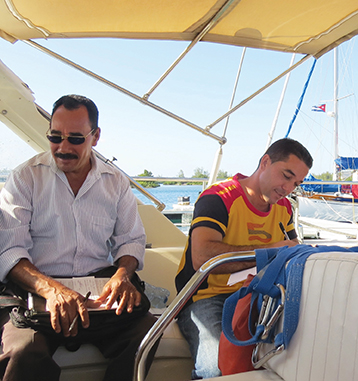
After Immigration and Coast Guard visits, the agricultural inspector and veterinarian checked our food. The long-past sell-by dates of a few dozen rusty cans in the bilge relegated them to a garbage bag. Later, our South American-born crew caught an exchange that hinted the cans might wind up on somebody’s table. I felt oddly pleased about the inadvertent gift of our emergency rations.
Provisioning moved to the top of the to-do list as soon as I finished paperwork. Outside the marina office, a line of Korean buses dropped off snorkelers from the hotels. Across the street were a bank, souvenir shop and clinic. Closer to the docks we found a disco, restaurant, dive center, shower and toilet block and grocery-chandlery.
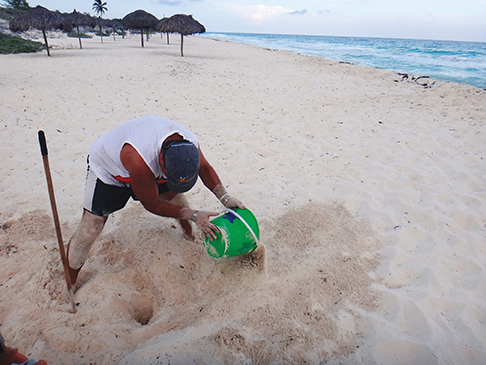
TURTLES
Meanwhile, the crew discovered a low fence surrounding a sandy enclave. Inside were cement tanks brimming with endangered green sea turtles. The turtles’ caretaker, Leonardo, said they tracked year-old turtles when they swam away; it would be at least 20 years before they returned to lay eggs on their native beach. Even a turtle’s sophisticated internal GPS couldn’t warn them that while they were growing up, 15 resorts had been built on Cayo Largo. Now their nests were in danger of being trampled by volleyball players. Sea levels were rising, too. With less beach available, the turtles might lay their eggs where sea water encroached. The seagull population, perhaps the greatest threat, had grown, too.
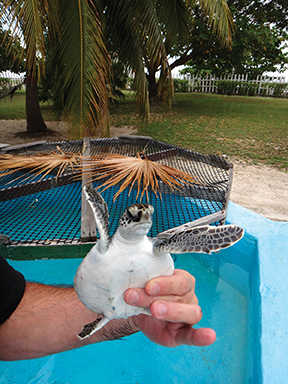
The center provided a safe place for endangered turtles to hatch and grow. Just that morning Leonardo had a report of a new nest that needed moving. Would our crew like to join him?
Si.
The turtle’s trail through the sand resembled tire treads with a tail mark down the middle. She had lumbered ashore, dug a hole, laid a hundred or so eggs, covered the nest and returned to sea, all in the space of a tide. As Leonardo extracted each egg, he placed it in a bucket, bottom-side down. Back at the center, he carefully recreated the nest, even using the same sand. On a stick he wrote the date, and another date 45 days later when the turtles would hatch, and placed it next to the nest.
I wondered what habitat this summer’s hatchlings would find in 20 years. Could Cuba balance a huge increase in the number of tourists with the need to protect the pristine environment that drew them?
Cuba’s embrace of tourism made it determined to show its best face. Cayo Largo was gorgeous. But what seemed to be was sometimes more important than what was.
I listened carefully to what was said and how it was said. What to me was an innocent question could be perceived as criticism of their government. I avoided discussions of political opinions or even personal lives in order not to make them uncomfortable or put them at risk.

Yet again and again, we heard that the only way to survive economically was through access to hard currency. Tourists on Cayo Largo had plenty of that. To them, Cuba was rich in natural beauty, a land of all-inclusive, all-you-can-eat buffets. “Inclusive” meant airfare, food, drink, and lodging, but it did not mean that Cubans were welcome.
Despite the recent thawing of relationships, Cuba remained a dictatorship. Its people were still closely watched and their activities heavily regulated. They lived with restrictions not imposed on foreigners. The sole place Cubans were allowed to mix with foreigners was at the marina’s Wednesday night disco. Our interactions were sometimes intense, sometimes lighthearted. Some conversations took me days or weeks to process.
As one official noted, smiling, “When we Cubans are unhappy, we smile.” I had to learn their ways before I could show respect.
Cuban staff had an all-inclusive deal, too. Everyone from dive captain to housekeeper to immigration officer was a guest worker on Cayo Largo. They commuted by high-speed ferry from their homes on Isla de la Juventud or Havana to live in dormitories, meals included, for 20 days. Then they had to return home for 10 days.
CUIDADO
I had to return home, too, for a family obligation. The rest of the crew had reservations to return to their respective countries. I told the dockmaster I had to go to the US for a couple of weeks. Could we leave the boat tied at the international dock?
“No problem.” Piri’s was the tanned, unfazed face of the new Cuba. No problem was beyond his reach. In five different languages, Piri wheedled, lectured, cajoled, confided and brokered deals—all without benefit of internet or smart phone. If you believed him, he was even involved in negotiating regulations around the not-too-far-off arrival of American cruising boats.
Cubans knew we were coming, but not what to expect. I wasn’t expecting what came next, either. “You can leave the boat, but the marina bill must be paid in advance.”
At .80 CUC per foot per day, our combined cash fell short.
Piri was sympathetic. He said the boat could be left at the marina in the care of a qualified marinero at a 30 percent discount. It was called Guarda y Cuidado, or custodianship. I agreed instantly. What could go wrong?
UNEXPECTED VISITORS
Three weeks later, I returned to the boat with new crew. As soon as I stepped into the galley I knew something was wrong.
Trails of droppings led across the galley counters, through cubbies, and over the nav station. Soap and chocolate were scored by teeth marks; foil packets once containing medicines were ripped apart and empty. Two large holes in the galley’s fiberglass hatch screen confirmed an invasion by rodents of an unusual size.
And our marinero? He had been called to Havana for a family emergency.
Cuidado had another meaning, “look out!”
A search turned up the remains of spare rings and seals and more droppings in the deepest parts of the boat, but no rat. Then we found the nest, made of shredded foam and smelling of blood and urine. A family of rats.
We jettisoned the nibbled food, wiping out the remainder of our provisions. We would have to stock up again soon. The chandlery mostly stocked rum, jam and industrial-sized cans of peas and tomatoes. There was no town and no market, only supply barges to the hotels and dormitories. With food so difficult to find, living in a dorm with three meals a day like the Cubans didn’t sound half bad.
Rita, the chandlery manager who was known to work magic, told me to ask Juan Ricardo what to do about rats.
Juan Ricardo kept the dive operation in great working order. In his 70s, he was one of those Cuban mechanics who worked a different kind of magic.
As a Danish cruiser put it, “Cubans can fix anything, using nothing.”
Juan Ricardo produced a trap the size of a mailbox with a bait hook that would spring a guillotine of a canted tin door. It didn’t work. The Port captain nodded knowingly. ”Es una rata Cubana. Muy inteligente.” Whose side was he on?
Juan Ricardo asked the veterinarian for sticky traps. He gave us two. Nada. He lent us a cat that caused a ruckus in the forward cabin, raising our hopes the rat was gone. We could finally leave.
After we departed the fuel dock, the helmsman engaged the autopilot and added 10 degrees. The wheel spun over, hard, and didn’t stop. We would have to hand steer until we could fix it.
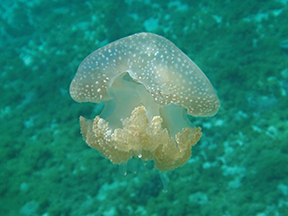
LOS CANARREOS
We made for the Canarreos Archipelago, whose closer cayos—Rico, Rosario, and Cantiles—were popular snorkeling day trips. Avalos, Campos, Matitas and Matias had reef-sheltered anchorages with depths of four to 40 feet and empty beaches. Cayo Matias’s entrance proved easy to navigate in good light. We anchored in 10 feet of extraordinarily clear water. The resident engineer confirmed the rat had chewed clean through our rudder position indicator cable. Fortunately the repair was easy. Unfortunately, we found signs that at least one rodent remained with us.
A short swim to the reef took us over breathtaking white, lavender and green coral gardens; sea fans and brain coral, conchs and lobsters, abundant schools of tang. Where were the mooring buoys? What would happen when snorkel boats full of tourists arrived? Could Cuba’s environmental plan protect the reef, or would the impact of tourists be like our rat, wreaking havoc with the designated course?
ISLA DE LA JUVENTUD
Pine-covered mountains to the east and a crescent-shaped peninsula to the south protected Ensenada Siguanea from wind and swell. Siguanea was shoal, silted by a hurricane, but the anchorage was tenable. The port served as dive headquarters for El Colony, a hotel one mile down the road with internet and a 24-hour infirmary.
We asked nicely at the marina office if we could land our dinghy at the hotel.
No, mi amor.
We asked nicely, did anyone have a cat? They glowed.
Sí. This was a Cuban solution.
After a harrowing dinghy ride and near-drowning, a calico took up temporary residence, a gato cubano to match wits with the rata cubana.
La Isla presented our only opportunity to reprovision before a passage. The taxi ride to Nueva Gerona took an hour. The port at the capital city was off limits to private boats and tourism was light, but we found food aplenty. In place of the traditional half-sugar, half-coffee cafecito, we sipped guarapo, pressed cane juice that tasted like liquid sugar. A corridor of brick and marble from La Isla’s quarries led to the town square in what appeared to be a booming capital. With hundreds of residents employed on Cayo Largo, hard-currency tips were streaming down to La Isla.
Before departure, we spent hours searching for the cat. The Guarda Frontera arrived for its final inspection. Just when it looked like she would become permanent crew, the cat finally emerged from her bilge hideout. She lapped at a bowl of milk and purred, but divulged nothing about the rat’s fate. Had he been dispatched? Fled?
Or was the rata cubana still below, gnawing through another cable?
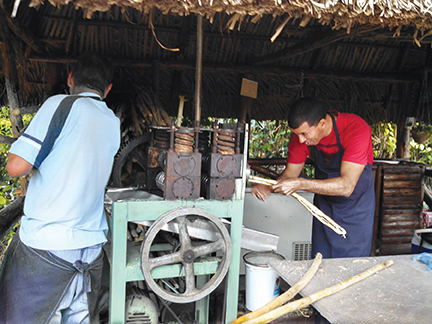
REFLECTION ON CUBA
To visit Cuba is to expand one’s fundamental understanding of how the world works. The American mind reels at the idea that a marine engineer chooses to drive a taxi, not because he has come down in the world, but because he is ambitious. That a qualified captain—a graduate of the Naval Institute—may wait years to spend a single week at the helm of someone else’s vessel. Or that an excellent marine mechanic washes charter boats.
It’s equally difficult for Cubans to wrap their heads around the notion that one person’s education or area of expertise entitles him to earn far more than another, never mind earn enough to personally own a cruising sailboat. That pricing is competitive. Or that material goods can possibly cost what they do.
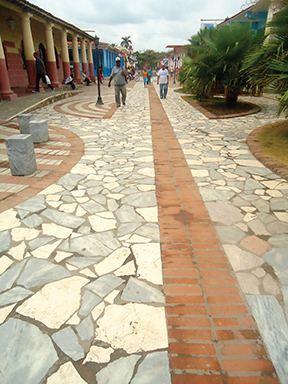 Most of the Cubans I encountered hadn’t ever met an American, but looked forward to forging a friendship. During my time in Cuba, people looked out for me. They offered assistance, were eager to learn, showed off the beauty of their place, and delighted in sharing stories.
Most of the Cubans I encountered hadn’t ever met an American, but looked forward to forging a friendship. During my time in Cuba, people looked out for me. They offered assistance, were eager to learn, showed off the beauty of their place, and delighted in sharing stories.
We are not so different, Cubans and cruisers.
This is the final article of a three-part, east to west exploration of the south side of Cuba. Christine (and her OFAC license) spent the season exploring Cuba, and blogging as Sissy Puedes in Cruising Compass. She and Stephan Regulinski cruised five years on Delos with their three children. Once they finish paying college tuition, they look forward to cruising again on Hanalei, another Amel SuperMaramu.

















